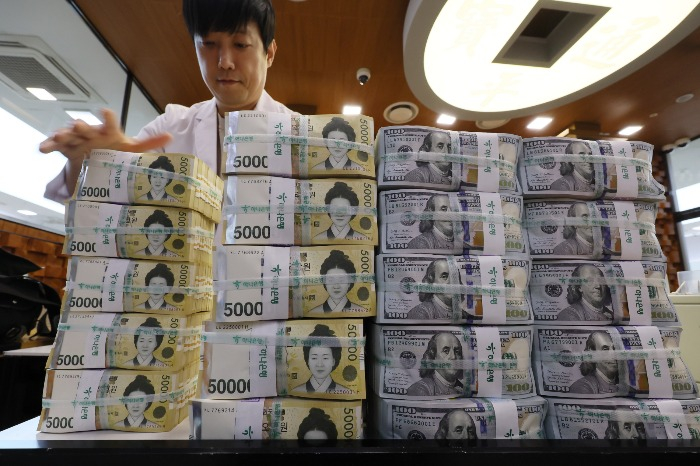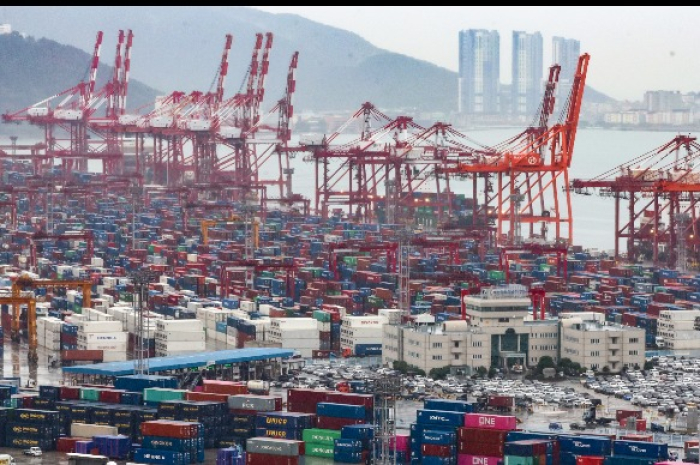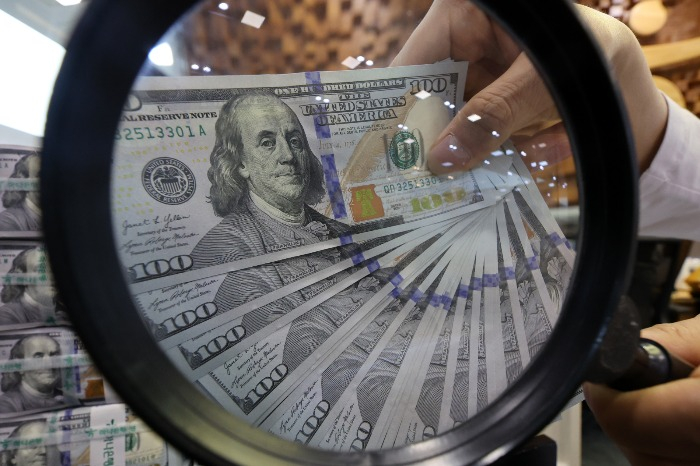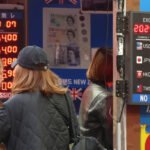
The United States has reinstated South Korea on its foreign-exchange monitoring watchlist a year after it removed Asia’s No. 4 economy from the list.
Korea is put back on the list because the country has met two of the three criteria set by the US Trade Facilitation and Trade Enforcement Act of 2015, also known as the 2015 Act, according to a Treasury Department’s semiannual report on major US trading partners’ macroeconomic and foreign exchange policies released on Thursday.
On Friday, Korea’s Ministry of Economy and Finance explained that Korea is added to the list again because its bilateral trade surplus with the US exceeded $15 billion, and the country’s current account surplus surpassed 3% of its gross domestic product (GDP).
The third criterion is persistent, one-sided intervention in the foreign currency market for at least eight months during a year and with net purchases totaling at least 2% of an economy’s GDP over a 12-month period.
None of the countries on the US FX monitoring watchlist, including Korea, however, manipulated the rate of exchange between its currency and the US dollar “for purposes of preventing effective balance of payments adjustments or gaining unfair competitive advantage in international trade,” the report said.
China, Japan, Taiwan, Singapore, Vietnam and Germany have been on the list since June 2024.
Korea left the list in November last year for the first time in seven years and stayed away from it in June this year because the country met the criteria of an excessive trade surplus with the US only.

As of end-June, Korea’s annualized current account surplus took up 3.7% of the country’s GDP due to a significant increase in the country’s current account surplus from July last year to June this year on higher goods surplus driven by strong global demand for Korean tech goods, according to the Treasury Department’s report.
It also said Korea’s trade surplus with the US jumped to $50 billion from $38 billion over the same period.
EXCUSE FOR MEASURES TO NARROW KOREA’S TRADE SURPLUS
Any adverse effect from Korea’s return to the FX monitoring watchlist is expected to be limited but concerns are growing that President-elect Trump would take Korea’s bigger trade surplus with the US as an excuse to pressure Korea into narrowing it.
“Considering that against the US concerns, Korea has sold US dollars to prevent a fall in its currency value, it is unlikely that the US would take any extra measures” that are discriminative to Korea, said Jeong Young-sik, executive director of the International Macroeconomics and Finance department at the Institute for International Economic Policy (KIEP).
“But the (new) US administration could use it as an excuse to narrow Korea’s trade surplus with the US.”

Korea’s return to the US FX monitoring watchlist comes at a time when the country’s currency is grappling with a freefall in its value against the US dollar.
The US dollar has further gained strength against a basket of major currencies after the re-election of Donald J. Trump as US president who has pledged to slap high tariffs on imports and cut taxes.
The greenback has rapidly strengthened against the Korean won over the week, touching the psychologically important 1,400 won this week.
On Thursday, Korea’s Finance Minister Choi Sang-mok, also deputy prime minister for economic affairs, issued the country’s first verbal intervention over excessive volatility in the dollar-won exchange rate since April when the won briefly touched 1,400 per dollar due to escalating geopolitical tensions in the Middle East.
Since May, the won regained ground against the dollar and hovered around 1,300 per dollar.
Choi’s verbal intervention, however, failed to stop the won’s sliding.
The Korean government net-sold $9 billion worth of US dollars, accounting for 0.5% of the country’s GDP, to prevent the won’s sliding from July 2023 to June 2024.
The dollar/won rate ended at 1,406.40 on Friday versus 1,407.30 on Thursday.
By Se-Min Huh
semin@hankyung.com
Sookyung Seo edited this article.















